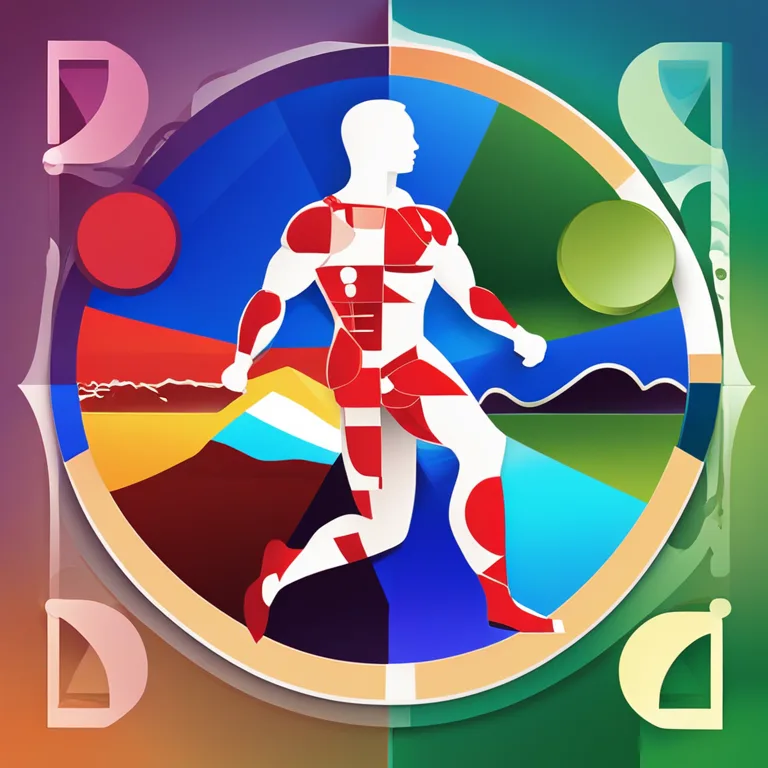
The Science Behind Biorhythms Foundations
Discover the foundational principles of biorhythms and how they influence our physical, emotional, and intellectual states.
article by Adrian Wallace
The Concept of Biorhythms
Biorhythms are an intriguing aspect of human physiology, proposing that our daily lives are affected by natural, rhythmic cycles. Historically, the idea of biorhythms dates back to the 19th century, but it gained popularity in the 20th century. Proponents of biorhythm theory believe that from the moment of birth, we are influenced by three fundamental cycles: physical, emotional, and intellectual. Each of these cycles is thought to ebb and flow in a predictable pattern, influencing our capabilities and moods accordingly. While the scientific community remains skeptical about the empirical evidence supporting biorhythms, they continue to captivate the interest of those studying alternative wellness methodologies.

The Cycles Explained
The physical cycle, lasting 23 days, is believed to influence our strength, health, and overall physical condition. Then comes the emotional cycle, with a 28-day duration, which purportedly affects our mood, creativity, and sensitivity. Lastly, the intellectual cycle, spanning 33 days, is said to govern our logic, alertness, and analytical abilities. These cycles are thought to operate independently of one another, meaning that they do not reset in unison, but rather ebb and flow continuously from our birth. The theory states that when each cycle starts, it emerges from a zero point, waxes to a peak, wanes back through the zero point, reaches a trough, and rises to the zero point again to restart the cycle.

Interpreting Biorhythmic States
In biorhythm theory, there are critical days to be mindful of—these occur when a cycle crosses the zero point, indicating a time of transition and instability. On these days, individuals might feel out of sorts or find their abilities in the relevant area(s) temporarily diminished. Conversely, when a cycle reaches its peak, an individual is believed to experience a heightened state of function, whereas a trough represents a potential low point in that same domain. The interpretation of these cycles is central to those who follow biorhythmic patterns, as it is thought to predict periods of high achievement or cautionary intervals.

The Skepticism Around Biorhythms
Despite the intrigue they command, biorhythms have faced significant skepticism from the scientific community. A key criticism is the lack of rigorous, controlled studies proving the efficacy of biorhythm theory in predicting fluctuations in one's physical, emotional, and intellectual abilities. Detractors argue that human experiences and capacities are too complex to be distilled into such simplistic, rhythmic patterns. Moreover, the premise that these cycles start at birth is disputed, as it would imply a genetic or biological mechanism that has yet to be identified or substantiated through scientific investigation.

The Modern Take on Biorhythms
In modern times, those who consider biorhythms often use digital tools for tracking and analysis. A variety of apps and software have been developed to graph these cycles, allowing users to input their birth date and instantly receive personalized biorhythm charts. Though still lacking in mainstream scientific endorsement, biorhythmic tracking has found its place in the digital era, paralleling the interest in quantified self-movement and personal analytics. This aligns with a broader societal trend of individuals seeking more information about their health and personal patterns to optimize their day-to-day lives.
Conclusion: Personal Significance Over Proven Science
Ultimately, the study and application of biorhythms lie more within the realm of personal curiosity and wellness exploration rather than proven scientific doctrine. For those who find value in the theory of biorhythms, it offers a framework through which to consider their personal cycles and rhythms, adding a dimension to their self-understanding and potentially serving as a guide for personal scheduling and decision-making. Regardless of scientific skepticism, biorhythm tracking continues to appeal to those seeking alternative insights into the interplay between their body, mind, and experiences.
Published: 12/28/2023
Modified: 12/28/2023
More predictions
Come back here soon to learn more about yourself and your future


The Accuracy of Biorhythms: Fact or Fallacy?
Evaluating the precision of biorhythms and how they merit in personal assessment for the contemporary mindful individual.


Measuring Your Biorhythms: A Step-by-Step Guide
Discover how to track and measure your biorhythms to better understand your physical, emotional, and intellectual cycles for optimal well-being.


The Rhythms Within: A Guide to Biorhythm Cycles
Discover the intricacies of biorhythm cycles and how they influence our daily lives. This article sheds light on personal energy patterns and their effects.